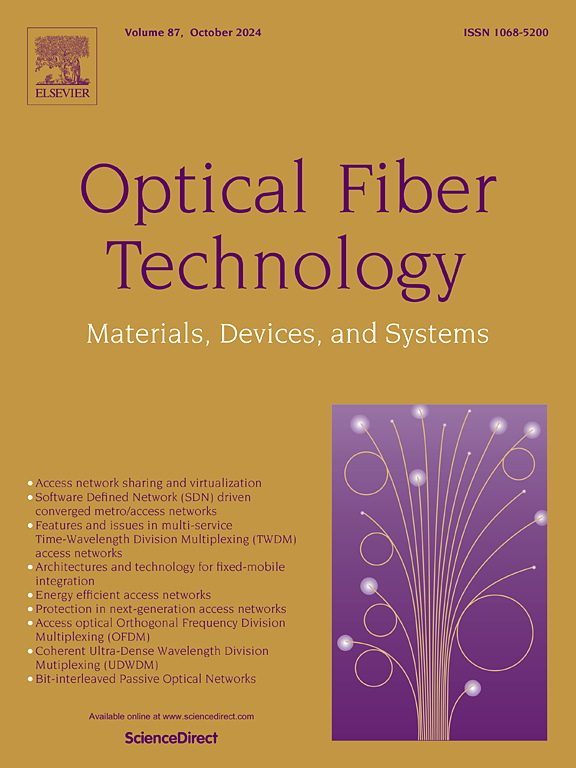Multi-objective evolutionary algorithm for the design of resilient OTN over DWDM networks
IF 2.6
3区 计算机科学
Q2 ENGINEERING, ELECTRICAL & ELECTRONIC
引用次数: 0
Abstract
Optical Transport Networks (OTN) arrived in the communications market bringing economic and operational benefits of virtualization. This technology works as a superior layer to the DWDM (Dense Wavelength Division Multiplexing) network, allowing more efficient resource usage. OTN approach decouples customers from DWDM interfaces, ensuring that optical links work more efficiently. This concept is carried out at OTN switches, allowing traffic to be aggregated at intermediate nodes and directed to routes that are being underutilized. Planning OTN over optical networks is a complex problem involving a new equipment structure and logical architecture. This problem has arisen due to academia and industry’s interest in developing planning heuristics to reduce the cost of the network. This paper proposes an algorithm to perform OTN network planning to meet the services and their survivability requirements such as restoration and/or protection with the goal of reducing the network cost in terms of the number of OTN interfaces. We propose to use a multi-objective evolutionary algorithm to seek a solution that optimizes the project considering two conflicting decision variables: the number of used OTN interfaces and the average number of restored paths in case of double-link failures. The experiments showed that the proposed solution obtained fewer allocated interfaces than previous heuristic algorithms found in the literature.
DWDM网络弹性OTN设计的多目标进化算法
光传输网络(OTN)进入通信市场带来了虚拟化的经济效益和运营效益。该技术作为DWDM(密集波分复用)网络的上层,允许更有效的资源使用。OTN方法将客户与DWDM接口分离,确保光链路更有效地工作。这个概念是在OTN交换机上实现的,允许流量在中间节点聚集,并定向到未充分利用的路由。光网络OTN规划是一个复杂的问题,涉及到新的设备结构和逻辑架构。这个问题是由于学术界和工业界对开发规划启发式方法以降低网络成本的兴趣而产生的。本文提出了一种算法来进行OTN网络规划,以满足业务及其恢复和/或保护等生存性需求,以减少OTN接口数量方面的网络成本。我们建议使用多目标进化算法来寻求一个解决方案,该方案考虑两个相互冲突的决策变量:使用的OTN接口数量和在双链路故障情况下恢复路径的平均数量。实验表明,与文献中发现的启发式算法相比,该方法获得的分配接口更少。
本文章由计算机程序翻译,如有差异,请以英文原文为准。
求助全文
约1分钟内获得全文
求助全文
来源期刊

Optical Fiber Technology
工程技术-电信学
CiteScore
4.80
自引率
11.10%
发文量
327
审稿时长
63 days
期刊介绍:
Innovations in optical fiber technology are revolutionizing world communications. Newly developed fiber amplifiers allow for direct transmission of high-speed signals over transcontinental distances without the need for electronic regeneration. Optical fibers find new applications in data processing. The impact of fiber materials, devices, and systems on communications in the coming decades will create an abundance of primary literature and the need for up-to-date reviews.
Optical Fiber Technology: Materials, Devices, and Systems is a new cutting-edge journal designed to fill a need in this rapidly evolving field for speedy publication of regular length papers. Both theoretical and experimental papers on fiber materials, devices, and system performance evaluation and measurements are eligible, with emphasis on practical applications.
 求助内容:
求助内容: 应助结果提醒方式:
应助结果提醒方式:


